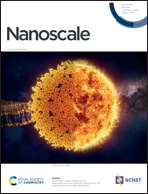Tuning the performance of Fe–porphyrin aerogel-based PGM-free oxygen reduction reaction catalysts in proton exchange membrane fuel cells
Abstract
Fe–N–C catalysts are currently the leading candidates to replace Pt-based catalysts for the oxygen reduction reaction in proton exchange membrane fuel cells. To maximize their activity, it is necessary to optimize their structure to allow high active site density on one hand, and hierarchical porous structure that will allow good mass transport of reactants and products to and from the active sites on the other hand. Hence, the hierarchical structure of the catalyst plays an important role in the balance between the electrochemical active site density and the mass transport resistance. Aerogels were synthesized in this work to study the interplay between these two parameters. Aerogels are covalent organic frameworks with ultra-low density, high porosity, and large surface area. The relative ease of tuning the composition and pore structure of aerogels make them prominent candidates for catalysis. Herein, we report on a tunable Fe–N–C catalyst based on an Fe porphyrin aerogel, which shows high electrocatalytic oxygen reduction reaction activity with tunable hierarchical pore structure and studied the influence of the porous structure on the overall performance in proton exchange membrane fuel cells.



 Please wait while we load your content...
Please wait while we load your content...